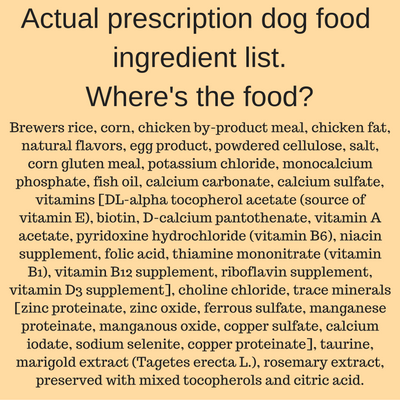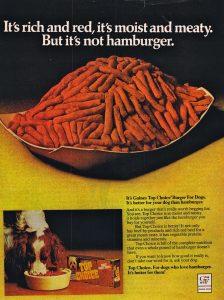Dog food debate – Part 2
So, how do you decide what to feed your dog? With conflicting advice and all the choices available, how do you choose?
Our journey through the world of dog food choices was filled with land mines. We were doing okay about four years ago. Four dogs eating three different kinds of kibble, but we were okay.
Dax, my (Hope’s) first French Bulldog, had a bizarrely abnormal ph. If we didn’t keep her neutral, she developed crystals in her urine and bladder and kidney stones. Most dogs are either too acid or too alkaline – not Dax. So most of her too-short life, she ate prescription  kibble.
kibble.
Teddy (French Bulldog) was another story. He can’t tolerate any milk products, or any orange food. We found this out the hard way when I shared my baby carrots with him at lunch. If Teddy has any orange food (except for Cheetos), he salivates like crazy and is urpy the rest of the day. (Do Cheetos count as food?)
Roc (Brussels Griffon) couldn’t eat any poultry products. We found a kibble that didn’t have even “chicken meal” or “chicken by products” as an ingredient. We went with it.
Back in the day, Tango (Brussels Griffon) was easy. He got what Roc got. At least we had two dogs eating the same food.
And then Booker (Boston Terrier) came along. At first Fran thought he was a picky eater. He wasn’t. He just didn’t like the food the breeder sent him home with. He’d eat anything. And it came pouring out the other end, no matter what we tried. We attempted all three resident kibbles, top-quality puppy foods, mediocre-quality puppy foods, canned foods. It was frustrating and heartbreaking to see him eating nothing but chicken broth and rice.
Fortunately, a friend of ours started her own dog food business. She suggested we try Booker on her raw food. Lisa makes the food from human-grade meat, vegetables, and fruit. No grain, nothing processed. We gave it a go. Again, no luck.
We’ve heard that veterinarians get only a few days of nutrition education in school. And the information they get is sponsored by the big dog food manufacturers. Lisa studied dog nutrition and said Booker might lack an enzyme that allows him to process raw food. She offered to bake his meal bars.
There was great rejoicing in the house! Booker was thriving on his hand-made, baked meal bars. For this dog, we had an answer.
Then I brought Torque home. His breeder was an early advocate and adopter of raw food for dogs. Torque had eaten nothing else since birth. We knew Booker was doing great, so we decided that Torque would continue eating raw, made by Lisa’s company, “Your Pet Chef.”
So we had two dogs on specialty food, and two on kibble (Roc, sadly, was no longer with us).
Teddy was getting a bit chunky, so we decided to switch half of his food to raw bars. He slimmed down and was doing great – Lisa stuck to our “no orange food” for Teddy.
Then Tango developed crystals in his urine and went on prescription kibble. The stuff was incredibly fatty – to keep him at a good weight the poor dog was getting less than half a cup of food a day. He was also not peeing on a regular basis – and we couldn’t get him to drink any more.
And then there was a forehead-slapping reality check. I read the ingredients of Tango’s
expensive, prescription diet. There was little food in it. Lots of fillers and byproducts and preservatives, but no real food.
So we did our research. We figured out that his oxalate crystals are vegetable-based. We found out which veggies are high in oxalates. And we actually started making his food ourselves. Oxalates aren’t found in meat products – he could have any proteins. So why aren’t the prescription diets for dogs with oxalate issues packed with protein? Why all the fillers and grains?
Tango loves his home made food and is healthier than ever. And now he pees like a champ on a regular basis – just like a normal male dog.
Rather than wade through the rip currents of the dog industry, our answer has been to opt out. Our dogs’ food is custom made, either by our friend’s company, or by us. Because we just don’t trust anyone else.









